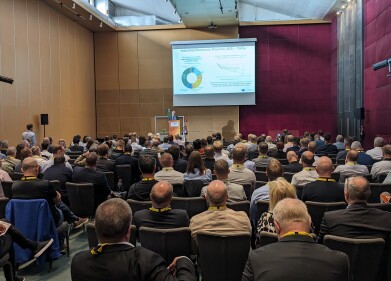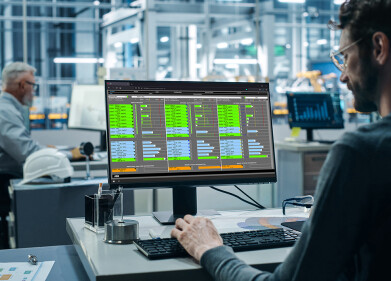Air monitoring
Study confirms which lightning detection technology delivers the most precise measurements
Aug 07 2018
Sensors built by Vaisala detect over 98% of all cloud-to-ground lightning flashes. The network of sensors locate these ground lightning flashes with a median accuracy of better than 200 metres. Based on results from validation studies performed in the US, this was the conclusion reached by Stephan Thern, Head of Siemens Lightning Information Service (BLIDS), which has used Vaisala's lightning sensors since 2003.
Since 1991, Siemens has operated a comprehensive lightning flash information service (BLIDS) that is now accessed by over 10,000 users. With BLIDS, utility companies, turbine operators and insurance companies have access to real-time data, can issue alert messages in advance, identify risks and fault causes, and even shut down airports or protect wind turbine service technicians. In 2016 alone, the service registered 432,000 cloud-to-ground lightning flashes in Germany. Siemens is currently using the latest Vaisala sensor model based on 40 years of experience in lightning detection. Siemens and Vaisala are members of EUCLID, a collaboration of national lightning detection network operators operating 160 sensors across 27 European countries.
With its latest sensors, Vaisala has made further progress in the detection of cloud lightning. As confirmed by validation studies using data from the National Lightning Detection Network (NLDN) in the US, Vaisala's sensors can detect the difference between a ground stroke and cloud lightning with better than 90% accuracy.
"The large voltage spikes and electrical current associated with cloud-to-ground lightning create a variety of hazards for both people and property. Due to these dangers, knowing the precise location and strength of each cloud-to-ground stroke is hugely beneficial to a variety of commercial and industrial applications," says Dr. Ryan Said, Research Scientist at Vaisala.
"For example, a utility operator may want to know if a transmission line fault was caused by a lightning stroke. Or a wind farm operator may want to check specific turbines for damage after a thunderstorm passes overhead. In these types of applications, the quality of the lightning data translates directly to operational efficiency. In particular, users benefit from precise locations and reliable classification of each event. If a ground stroke is misclassified as a cloud pulse or is not precisely located, the user may not perform a necessary inspection to check for damage, leading to increased downtime."
"Vaisala's lightning detection system delivers the best performance," states Thern. "Thanks to the precise measurement technology, the sensors can be set up at distances of 350 kilometres apart without any problem, which significantly reduces the installation, operating and maintenance costs. By 2020 we will set up six new stations with Vaisala sensors and continue to combine the lightning and weather data in order to be able to be able to predict the direction of storm fronts even better."
Digital Edition
AET 28.4 Oct/Nov 2024
November 2024
Gas Detection - Go from lagging to leading: why investment in gas detection makes sense Air Monitoring - Swirl and vortex meters will aid green hydrogen production - Beyond the Stack: Emi...
View all digital editions
Events
Jan 14 2025 Abu Dhabi, UAE
Jan 20 2025 San Diego, CA, USA
Carrefour des Gestions Locales de L'eau
Jan 22 2025 Rennes, France
Safety, Health & Wellbeing LIVE
Jan 22 2025 Manchester, UK
Jan 25 2025 San Diego, CA, USA



















